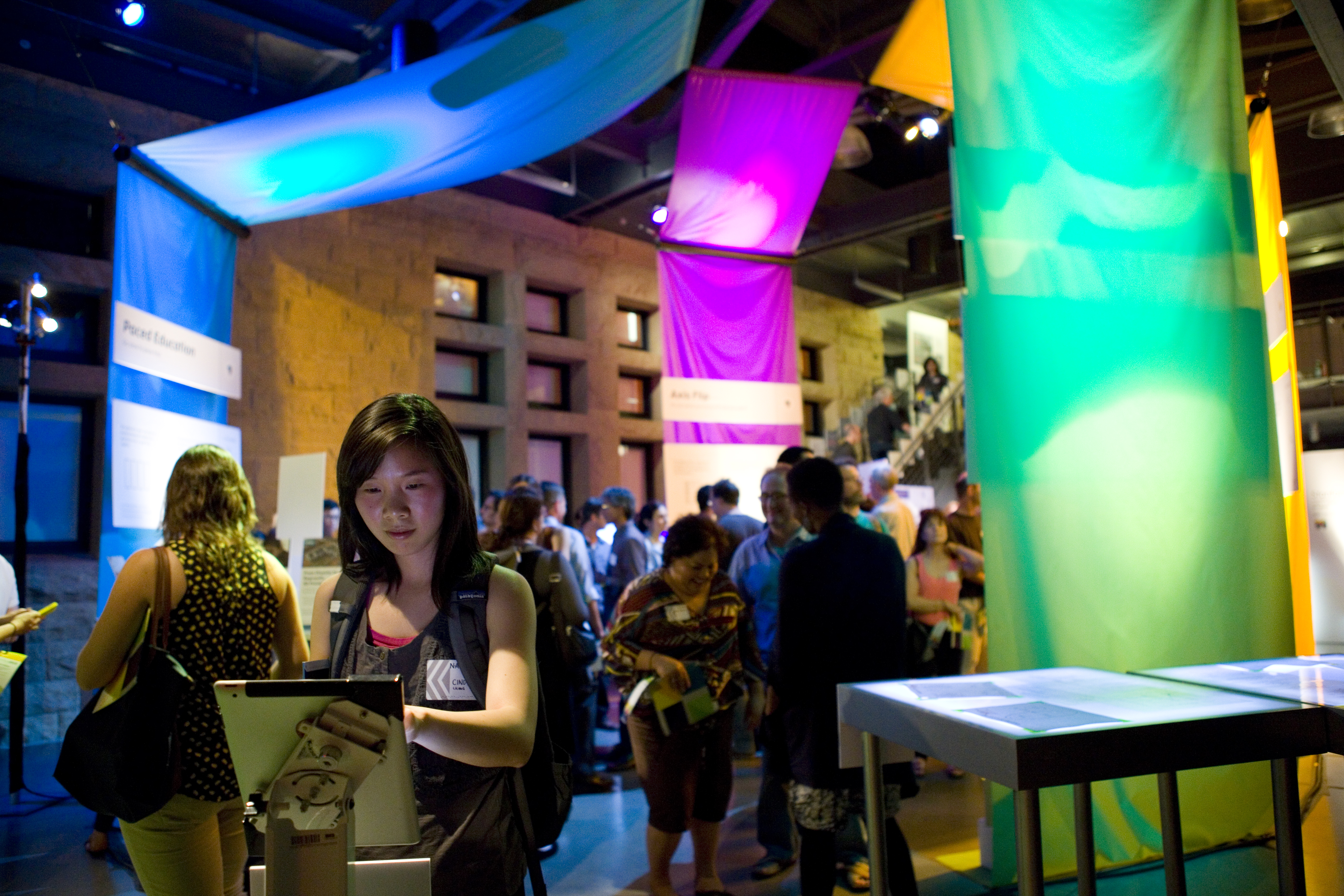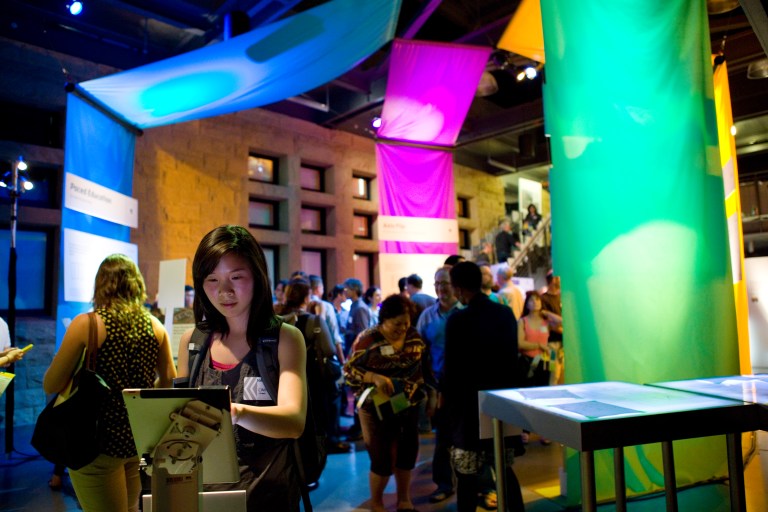
Although much of the current discussion on the future education has focused on the emerging role of technology and online learning, the d.school decided to explore the future of the on-campus experience for students. For the past year, the @Stanford project has offered a series of classes and experiments exploring themes relating to this topic, according to d.school communication director Debbe Stern.
Stern added that the interdisciplinary @Stanford team comprised professors, designers, approximately 200 students and 60 to 75 administrators.
Event attendees were first invited to a reception outside the d.school, which featured bulletin boards on students’ individual projects. David Kelley ’77, founder of the d.school, introduced the event, emphasizing that the ideas featured were solely conceptual.
“What you’re about to see are just provocations,” Kelley said. “We’re not saying these are the best ideas or these are the only ideas. There will be big ideas, there will be small ones. There will be rough ideas, there will be refined ones. We’re not attached to any of them. But what we do believe we have uncovered is our needs, the non-obvious needs we need to solve in order to make this a special place. They’re provocations; they’re exploratory.”
Attendees were given informational packets attached to a tube that later was revealed to hold polarized sunglasses before being led into the d.school atrium, which were split into a number of different stations that exhibited various ideas of what learning might look like at Stanford in a little over 10 years.
The stations included “Paced Education,” “Axis Flip,” “Purpose Learning” and “Open Loop University,” and each encouraged event attendees to ask questions of what the future of education would look like.
For example, the “Open Loop University” station explored challenging the current structures of learning, namely the timing of when someone would pursue higher-level education.
“One of the main things was asking the question, ‘When over a person’s lifetime does it make sense and is it useful to have an academic experience?’” said Sarah Stein Greenberg MBA ’06, managing director at the d.school and part of the @Stanford project team.
“Our current paradigm is that you go to college in your early adulthood…and if you think about learning as a biological opportunity, it’s weird that we package it all in the beginning and say that you’re ready to go out in the world where in the real world people are moving constantly and new industries are being created all the time,” she added.
At the end of the exhibition, the @Stanford team expressed hope that the event will help students rethink and potentially reshape their academic experience.
“We hope you’ll start your own experience, that these provocations, that these ideas you see here will cause you to go back to your different departments and different organizations and really start to experiment,” Kelley said. “We really believe that if we start a bunch of small brushfires around the University, then eventually they’ll grow together and we’ll have this big improvement.”
Contact Catherine Zaw at zaw13 ‘at’ Stanford ‘dot’ edu.
